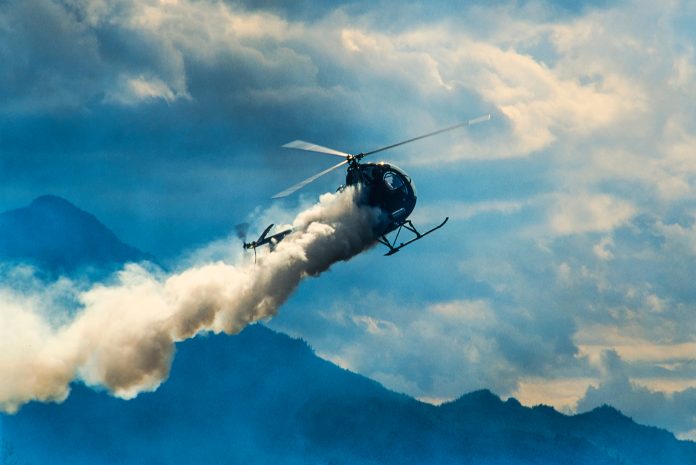
India’s skies turn deadly as a helicopter carrying Hindu pilgrims crashes in treacherous weather conditions, marking the fifth fatal crash on the same route in just six weeks and highlighting dangerous lapses in aviation safety across the country.
Key Takeaways
- Seven people, including a two-year-old girl, perished when a helicopter crashed shortly after takeoff from Kedarnath in Uttarakhand, India.
- This marks the fifth helicopter crash on this pilgrimage route in just six weeks, with a total of 13 fatalities, raising serious questions about safety protocols.
- Poor visibility and foggy conditions are believed to be the primary cause, with investigators suggesting a “controlled flight into terrain” scenario.
- The incident follows another major aviation disaster in India, where an Air India flight crashed in Ahmedabad killing 279 people, with only one survivor.
- Aviation authorities have suspended Aryan Aviation’s operations and implemented increased safety measures following the series of crashes.
Religious Pilgrimage Turns Tragic
A helicopter carrying pilgrims from the sacred Hindu site of Kedarnath crashed in Uttarakhand’s Rudraprayag district on Tuesday, killing all seven people aboard. The victims included pilot Rajveer Singh Chauhan, a family from Maharashtra including a two-year-old girl, two passengers from Uttar Pradesh, and a member of the temple committee. The aircraft, operated by Aryan Aviation, took off at 5:21 am and was last tracked at 5:24 am before being reported missing at 6:13 am. Dense fog and overcast conditions in the mountainous region severely hampered visibility, making the flight particularly hazardous.
The crash site near Gaurikund was difficult to access, requiring rescue teams from the National Disaster Response Force (NDRF) and State Disaster Response Force (SDRF) to trek five kilometers through challenging terrain. When they finally reached the wreckage, they found the helicopter had caught fire upon impact, leaving the bodies severely burned and difficult to identify. The intense flames had consumed both the aircraft and its passengers, creating a grim scene for first responders who worked diligently to recover the remains.
Alarming Pattern of Aviation Disasters
This tragic incident marks the fifth helicopter crash on the Char Dham pilgrimage route in just six weeks, bringing the death toll to 13 people. Previous crashes include an emergency landing on June 7 and a fatal crash in Uttarkashi on May 8 that killed six people. The frequency of these accidents has raised serious concerns about the safety of helicopter operations in the region, particularly during the busy pilgrimage season when operators may face pressure to maximize flights despite challenging conditions in the Himalayan terrain.
“controlled flight into terrain” According to the civil aviation ministry.
In response to this latest disaster, Chief Minister Pushkar Singh Dhami called the crash “very sad news” and ordered an immediate suspension of helicopter services in the area along with a high-level inquiry. The Directorate General of Civil Aviation (DGCA) has intensified safety oversight, implementing live monitoring and surprise audits of helicopter operators serving the pilgrimage routes. Aviation experts are emphasizing the need for greater accountability and warning against commercial pressures that might lead operators to take dangerous shortcuts with passenger safety.
National Aviation Crisis Deepens
The helicopter crash comes in the wake of a catastrophic Air India disaster in Ahmedabad that claimed 279 lives when a Boeing 787 Dreamliner crashed into a building. The sole survivor of that crash, Vishwash Ramesh, provided a harrowing account of the final moments before impact. “When the flight took off, within five to 10 seconds it felt like it was stuck in the air. Suddenly, the lights started flickering – green and white. The aircraft wasn’t gaining altitude and was just gliding before it suddenly slammed into a building and exploded,” Said Vishwash Ramesh.
These two major aviation incidents occurring in close succession have sent shockwaves through India’s transportation sector and raised urgent questions about the country’s aviation safety standards. Investigations are underway for both crashes, with black boxes recovered from the Air India flight. The Aircraft Accident Investigation Bureau (AAIB) has taken charge of examining the helicopter crash, with operations for Aryan Aviation suspended pending results. For the families left behind, these investigations offer little comfort as they mourn loved ones who set out on spiritual journeys only to meet tragic ends.
Challenging Terrain Complicates Pilgrimage Safety
Kedarnath, one of Hinduism’s most sacred sites, sits at an elevation of 11,755 feet in the Himalayan mountains. The difficult terrain makes the temple inaccessible by road, forcing pilgrims to either trek for days or take helicopter services. The area is notorious for sudden weather changes, with visibility often dropping to near-zero within minutes. These challenging conditions, combined with the high demand during pilgrimage seasons, create a perfect storm of risk factors that helicopter operators must navigate with extreme caution.
“HELICOPTER CARRYING HINDU PILGRIMS CRASHES IN INDIA’S HIMALAYAN STATE OF UTTARAKHAND, KILLING 7,” Said Biswajeet Banerjee Associated Press
As investigations continue and authorities implement stricter safety protocols, the broader question remains about how to balance religious tourism needs with safety imperatives. For now, the families of those lost in these crashes are left to grapple with their grief while millions of pilgrims must reconsider the risks of their spiritual journeys. The consecutive aviation disasters serve as a somber reminder that safety must never be compromised, regardless of commercial pressures or religious significance.













